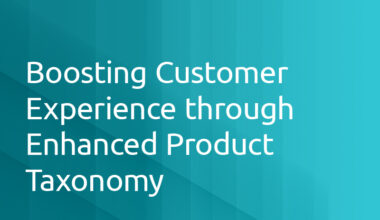In the fiercely competitive e-commerce landscape, the product classification strategy is more than just a backend taxonomy—it’s a critical element influencing user experience (UX). As modern UX principles evolve, it’s imperative for businesses to evaluate if their classification strategies are keeping pace.
- The Nexus between Product Classification and UX
- What is Product Classification? Essentially, it’s how you organize, categorize, and present products on your website.
- The UX Connection: A robust product classification impacts site navigation, search effectiveness, and overall user satisfaction.
- Modern UX Principles: A Glimpse
- Clarity and Simplicity: Modern UX champions straightforward and intuitive design.
- Consistency: Offering users a consistent experience across all touchpoints.
- User-Centric Design: Tailoring experiences based on user feedback and behavior.
- Aligning Product Classification with UX
- Intuitive Hierarchies: Your product categories and subcategories should mirror how users naturally think and search for products.
- Flexible Filtering: Allow users to filter products based on multiple attributes, enhancing search precision.
- Predictive Search: Incorporate machine learning to suggest products as users type in the search bar, based on your classification data.
- Potential Pitfalls of Misalignment
- Decreased Discoverability: Products buried deep without logical classification become nearly invisible.
- Cart Abandonment: Users frustrated by poor navigation or inability to locate products may abandon their shopping journey.
- Inconsistent User Experience: Inefficient classification can lead to a disjointed browsing experience.
- Reaping the Benefits of Aligned Strategies
- Increased Conversion Rates: Enhanced product discoverability and a streamlined user journey can boost conversions.
- Improved SEO: Search engines reward sites offering clear navigation, which a robust product classification system provides.
- Enhanced Customer Loyalty: A positive, frictionless UX can enhance customer retention.
- Assessing Your Current Strategy
- Feedback Loops: Regularly collect and analyze user feedback on product discovery and site navigation.
- Competitor Benchmarking: Examine competitors’ classification strategies and user feedback to identify potential gaps in your own approach.
- Analytics: Monitor site metrics like bounce rates, time spent on pages, and search effectiveness to gauge alignment.
- Evolution is Key
UX principles aren’t static. As consumer behaviors and preferences change, businesses must adapt their product classification strategy to ensure alignment with evolving UX benchmarks.
In the interconnected realms of product classification and user experience, alignment is not just beneficial—it’s crucial. By ensuring your product classification resonates with modern UX principles, you set the stage for enhanced user satisfaction, loyalty, and ultimately, increased sales.
Elevate Your E-commerce Experience
Want to optimize your product classification strategy? Reach out to Retail Taxonomy for insights tailored to your business needs.
 1.416.619.5349 Ext.325
1.416.619.5349 Ext.325 







